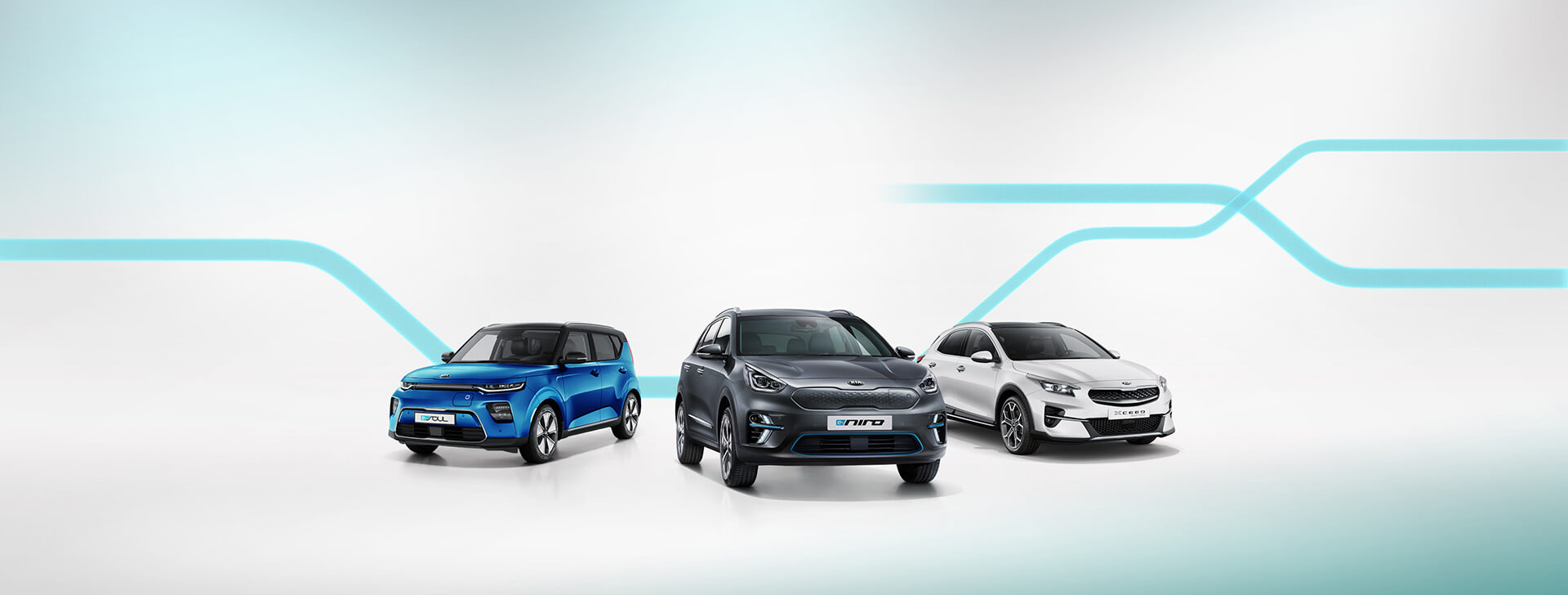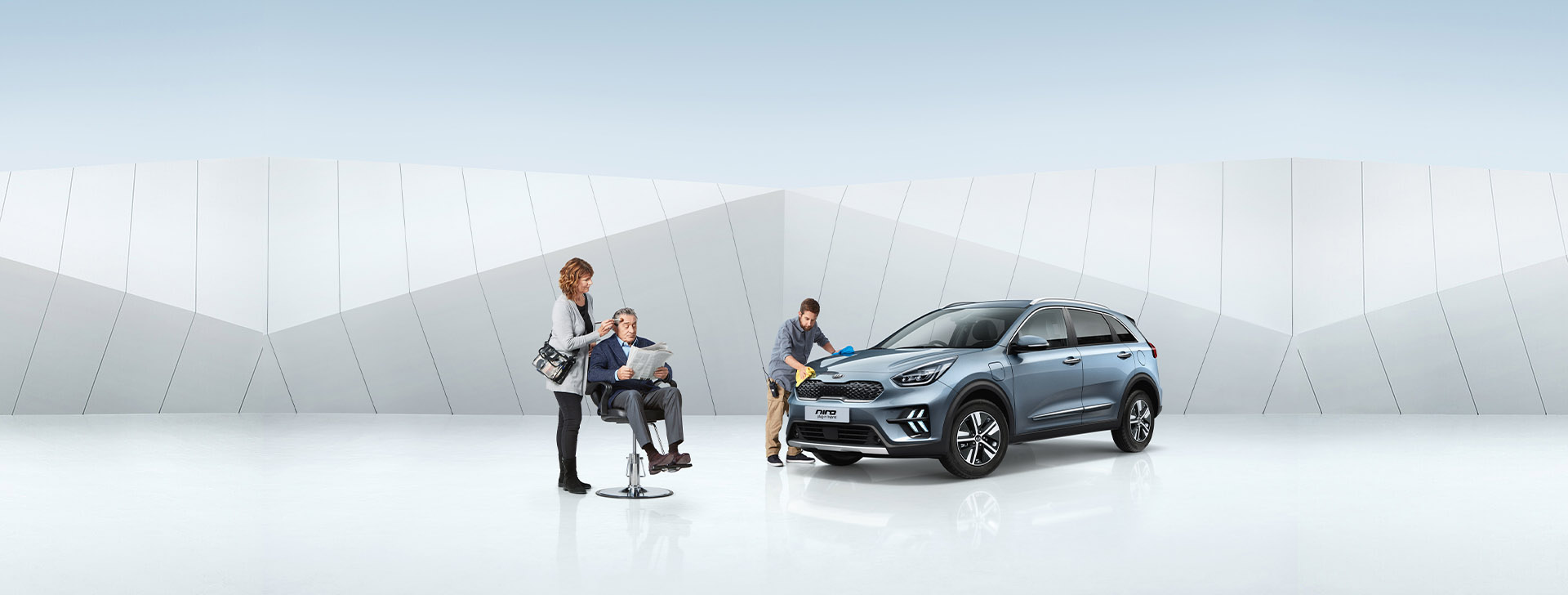Stop Wondering
You’re keen to #goelectric but would like to know more? You’re in the right place.
The new Kia Niro
Electrified Family.
There’s nothing
like a Niro.
Today, Kia is a leader in powertrain electrification, with a wide range of electric and hybrid cars that can reduce running costs and enhance driving enjoyment. Chief Operating Officer, Kia Motors Europe
The e-Soul is Kia’s first globally-sold electric car, and is proving increasingly popular with European buyers looking for an eco-friendly vehicle with stand-out design. Vice-President Global Brand &
Marketing, Kia Motors Corporation
STILL
WONDERING?
CHECK OUT OUR
FAQs
WHAT’S NEW IN
THE WORLD OF
KIA?
FIND OUT MORE
ABOUT KIA’S
7 YEAR
WARRNATY
WHAT’S NEW IN
THE WORLD OF
KIA?
HOW MUCH MAINTENANCE
DO ELECTRIC CARS
NEED?
Our latest electric cars enable zero-emissions, long-distance driving, and make the switch from fossil fuels as straightforward as possible. Director Product and Pricing of Kia Motors Europe
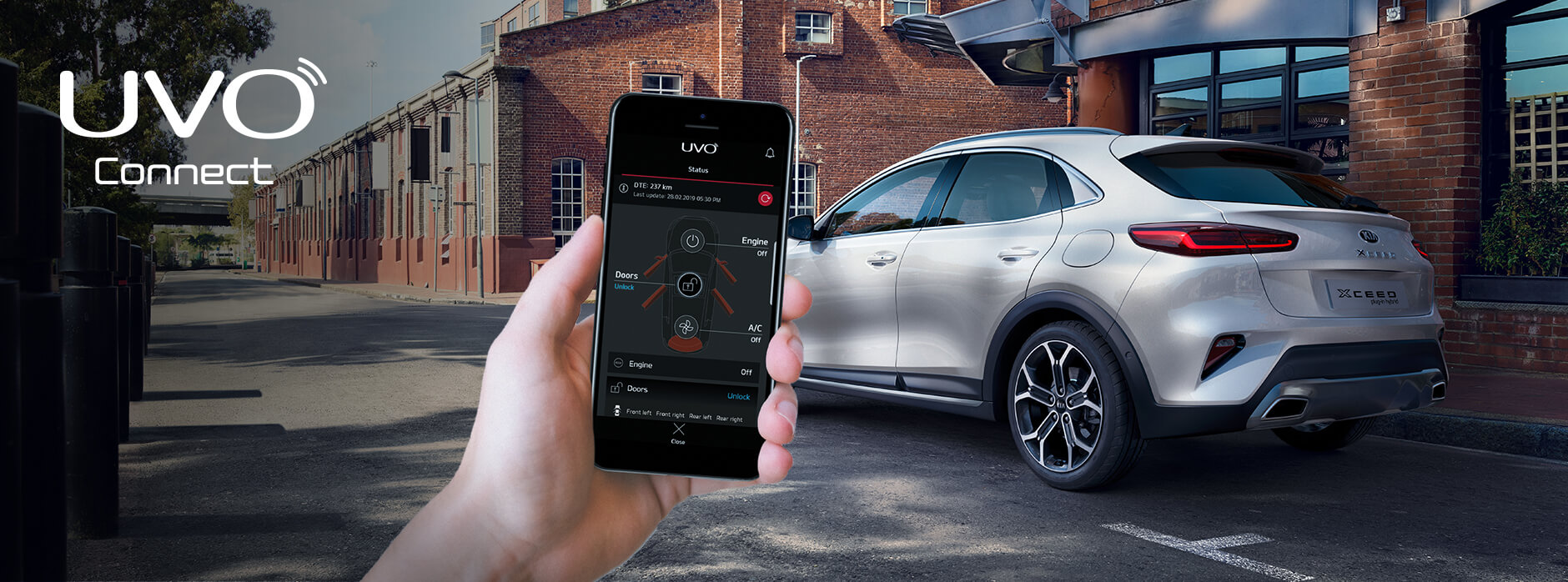
Still wondering?
If you have even more questions, you’re not alone. Here are the most frequently asked at a glance.
This depends on lots of different factors including the speed you drive at, how often you accelerate, the terrain, climate, geographical factors such as altitude, and the amount of cargo you’re transporting. The e-Niro and e-Soul are now capable of driving in excess of 450 km on a single charge. The Niro PHEV can drive in Full Electric Mode for a range of 55kms on a single charge, after which it switches to combined electric and petrol operation (HEV Mode). These values have been tested in the new WLTP (Worldwide Harmonized Light vehicle Test Procedure) test cycle and converted back to NEDC (New European Driving Cycle) in addition measured according to the RDE (Real Driving Emissions method).
Your best option, if you have off-street parking, is to charge your electric car at home. It is convenient and surprisingly cost-effective. With government incentive schemes that reimburse up to €600, now is the time to get a home charger fitted. Kia have partnered with Wallbox, so visit wallbox.com for more info on the type of charging units available. Charging speeds vary depending on your particular unit set-up. You can also make use of public charging networks when out and about, with more and more street-side stations available. Simply plug in your car’s charging cable, activate the charge point (usually via either a contactless RFID card or mobile app) and leave the car to do the rest. Please note that you will have to apply to the ESB for a card to use the public charging network. On street charging is free at present but charges are planned for introduction this year.
Considering the variety of electric cars and charging stations out there, it probably won’t surprise you to learn that the time involved in EV charging can vary too. Overall charging time will depend on whether you have a mid-range or long range battery and the charging mode you use. The period of time an electric car’s battery will take to recharge is determined by how many kilowatts (kW) the charging station can provide and how many your car can accept. The higher the battery wattage, the slower your electric vehicle will be charged up. A mid-range Kia will charge from a domestic Wallbox (to 100%) in about 6 hours and to 80% at a public DC rapid charger in just 35 minutes. A long range e-Niro or e-Soul Kia will charge from a domestic Wallbox (to 100%) in about 9 hours and to 80% at a public rapid DC charger in just 55 minutes. A Kia Niro PHEV will give you up to 55km of electric drive for just under 3 hours of charging time.
To calculate the cost of charging a High Voltage battery on any electric vehicle (PHEV or EV) using a home charger, you simply multiply the battery capacity by the cost of the electricity. Assuming the cost of electricity to be €0.17 per kWh, here’s what it would cost to charge the batteries that are used in both the e-Niro and e-Soul, and also the cost per 100km driving for the e-Niro, fitted with these batteries, based on the WLTP average range figures. The 64 kWh battery has an average range 455km, and the 39.2 kWh battery has an average range of 289km. On the long range battery: 64kWh (64 X €0.17) = €10.88 to fully charge = €2.39 per 100km (€10.80 /455km *100km). For the mid-range battery of: 39.2kWh (39.2 X €0.17) = €6.66 to fully charge = €2.30 per 100km (€6.66 / 289km *100km). A Niro PHEV will give you up to 55km of full electric drive for around €1.51 (8.9kWh X €0.17)
Kia currently has 3 Niro models costing as follows: Niro PHEV €31,995, e-Niro Mid-Range €33,495 and e-Niro Long-Range €37,495. Both e-Soul models, K2 and K3, are long range costing €35,995 and €37,495 respectively. The Niro PHEV price includes VRT relief of €2,500 and the SEAI grant of €5,000. e-Soul and e-Niro prices include VRT relief of €5,000 and €5,000 SEAI grant.
A plug in hybrid is very similar to a standard hybrid vehicle (HEV) but with one major difference: A standard hybrid car doesn’t have a plug for topping up its battery. A HEV charges mainly by using the vehicles combustion engine. A smart regeneration system also recuperates some energy whenever you brake or coast, reaching maximum regeneration in downhill situations The plug-in hybrid Niro works just like the standard hybrid, except it has a larger battery and gives you the additional option of charging it from an electric outlet. This can extend its electric range up to 55 kilometers and give low mileage drivers the opportunity of doing all, or a significant amount of , their day to day driving in full EV mode. When the battery is low it simply changes to Hybrid mode and “self-charges” in the same way.
There are many reasons. The Niro PHEV is ideal for those whose Monday to Friday mileage is low but who also want the flexibility of making long journeys at the weekend. It also comes with generous incentives including VRT relief of €2500 and an SEAI grant of up to €5,000, up to €600 home charger grant and reduced motorway toll. The Niro PHEV is also very economical in HEV mode and remember the battery can be charged at a public charging station giving drivers a “free“ 55km to continue their journey. And lastly, the Niro PHEV is a generously equipped motor car, with a unique 7-year warranty, and many comfort and safety features as standard.
There are essentially two options available to you – charging your EV at home using your own domestic mains electricity supply, or making use of public charging stations. This will affect the types (and speeds) of charging available to you. There are three categories or types of charging: Trickle Charge, AC Charge and DC Charge. Trickle Charge is the slowest method of charging at home, using a standard (three-prong) 220V plug. It doesn’t require installation of additional charging equipment and it can charge approx. 65 km of range in 5 hours (overnight), or 200 km in 14 hours. Using Trickle Charge is only recommended in urgent cases when you have low battery charge and cannot drive to a public station or access an AC wallbox at home. This is because the use of household electricity may cause problems associated with electricity bills and electrical loads, so always use this charge solution with caution and discuss with your electricity provider before first use. Purchasing an ICCB (In Cable Control Box) cable when using Trickle Charge is recommended, for maximum reliability and peace of mind. AC Household Charging is the most common and recommendable home charging option. By having a wallbox installed at your home, you can charge your EV approx. 3-4 faster than using Trickle Charge. AC Public Charging is also available, which is much faster again, although the majority of public charging stations use DC Fast Charging. It is the fastest way to charge your EV, providing power from 50kW and above. Using this method you can top up your battery from 20 to 80% in approx. 40 minutes.
While the density of charging stations varies from market to market, one thing is for sure: Europe’s electric vehicle charging network is growing all the time – with an ever-denser infrastructure of public charging stations popping up at shopping centres, car parks, places of work and motorway service stations across the continent. And with the growing demand for car charging points, and given the impact of innovation and technology, this EV charging infrastructure is set to continue expanding and improving in the future. And what’s more: All Kia Electrified Vehicles offer Kia Live Services provided by TomTom®(2) with a Parking Space and EV Charging Station Finder Map that conveniently guide you to the nearest charging station, wherever you happen to be in Europe.
Start Driving
Now you know the facts, #goelectric and discover all the Electrified models in the Kia range.
HYBRID
PLUG-IN HYBRID
ELECTRIC
MILD HYBRID
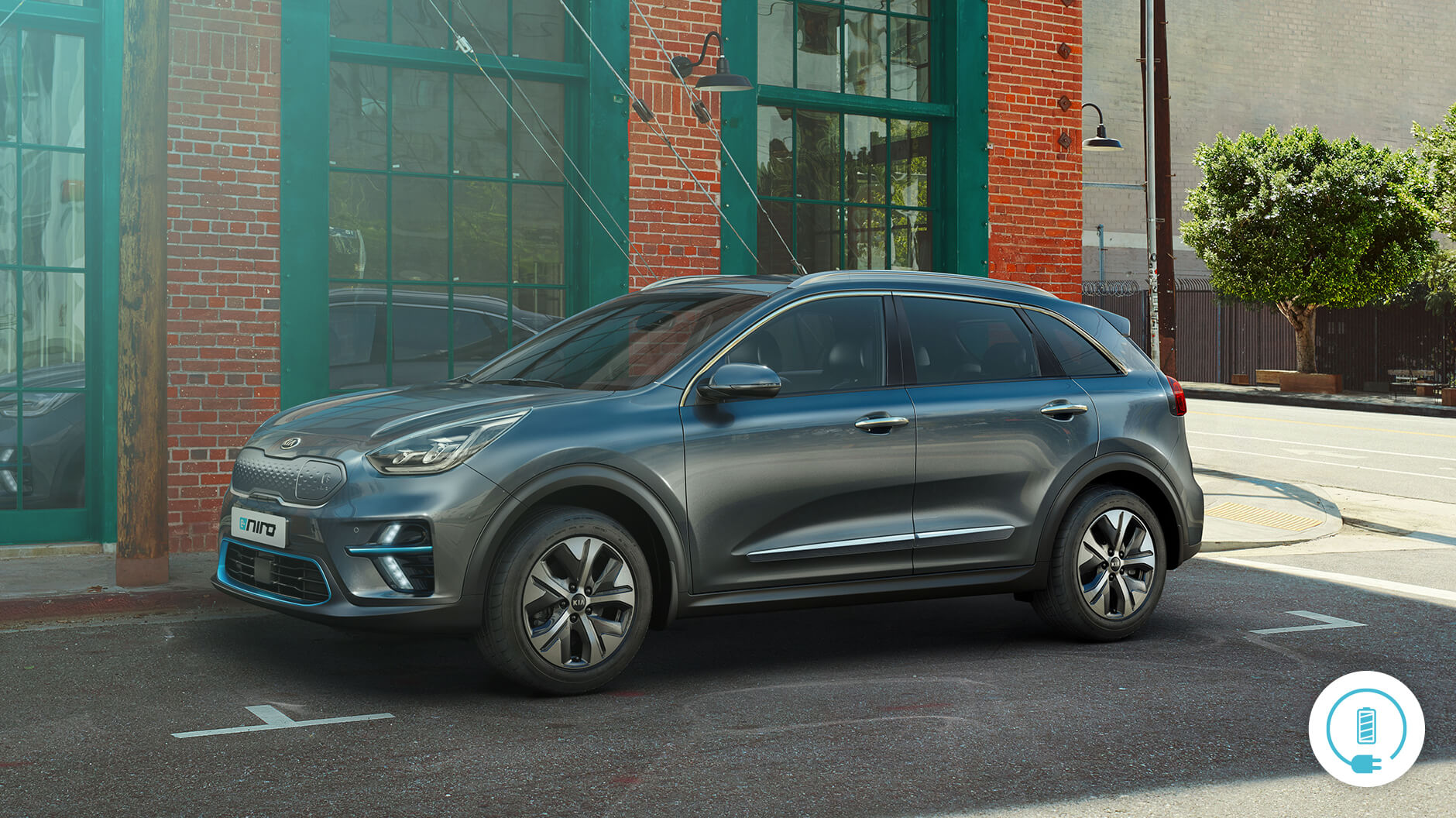
The new Kia e-Niro
Learn More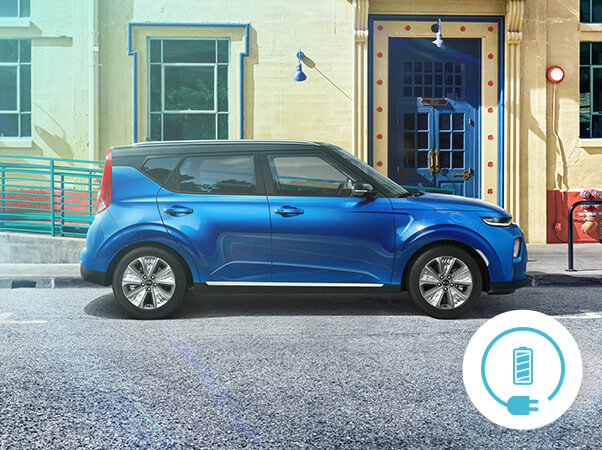
KIA E-SOUL
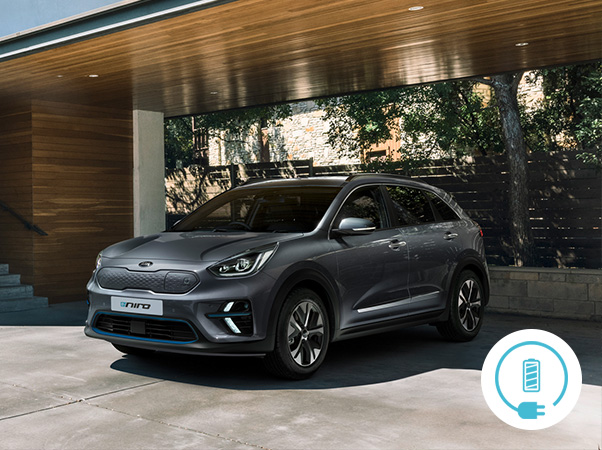
KIA E-NIRO
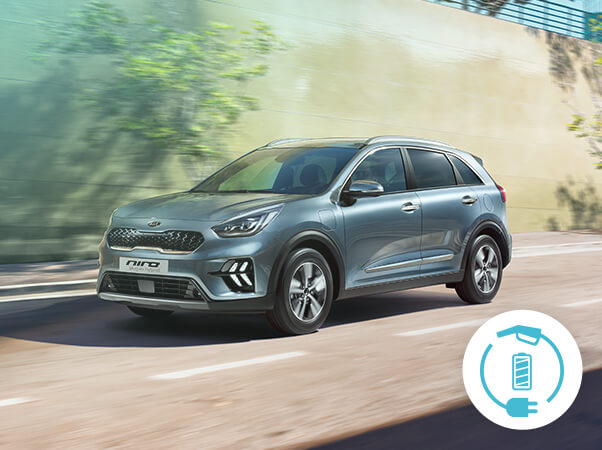
KIA NIRO PLUG-IN HYBRID
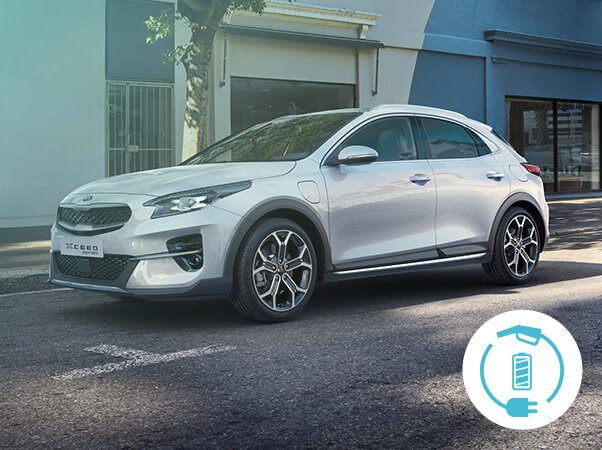
KIA XCEED PLUG-IN HYBRID
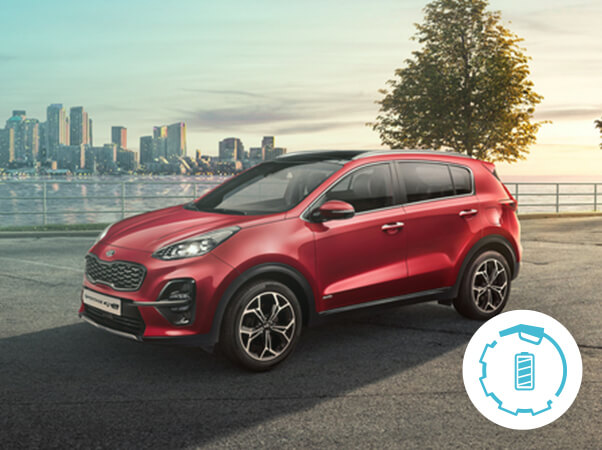
KIA SPORTAGE MILD HYBRID
Legal Disclaimer
(1) The Kia 7-year/150,000 km new car warranty
Kia warranty covers a period of 7 years from initial registration or 150,000 km, whichever comes first. Valid in all EU member states (plus Norway, Switzerland, Iceland & Gibraltar) Deviations according to the valid guarantee conditions, e.g. for battery, paint and equipment, subject to local terms and conditions. Find more information about Kia warranty at [www.Kia.com].
Kia high voltage lithium ion battery-units in electric vehicles (EV), hybrid electric vehicles (HEV) and plug-in hybrid electric vehicles (PHEV) are built to have a long life. These batteries are covered by the KIA warranty for a period of 7 years from initial registration or 150,000 km, whichever comes first. For low voltage batteries (48V and 12V) in mild-hybrid electric vehicles (MHEV), the Kia warranty covers a period of 2 years from initial registration regardless of mileage. For EVs only, Kia guarantees a 65% capacity of the battery. Capacity reduction of the battery in PHEV, HEV and MHEV is not covered by the warranty. To minimize possible capacity reduction, follow the instructions at [https://www.kia.com/eu/service/7-year-warranty/] or consult the Owner’s Manual. Find more information about Kia warranty at [www.Kia.com].
(2) TomTom® Live Services / Kia Live
The services are free for 7 years after the first connection of navigation to the mobile network. If the first connection does not take place immediately after purchase, the duration is reduced by the time between purchase and first connection.



